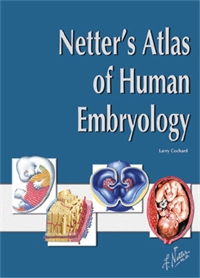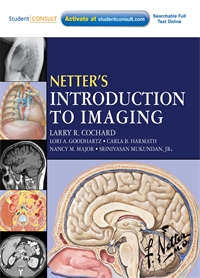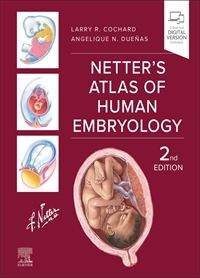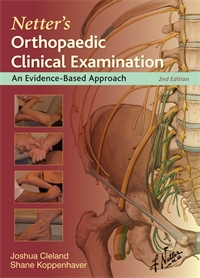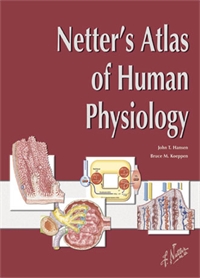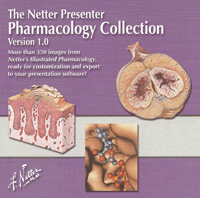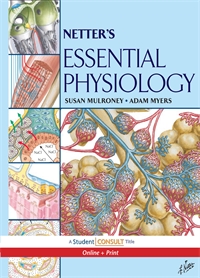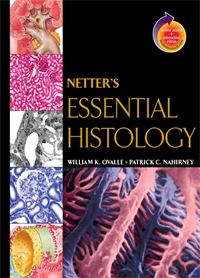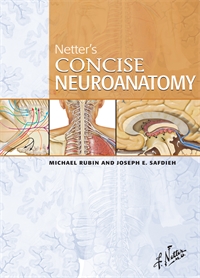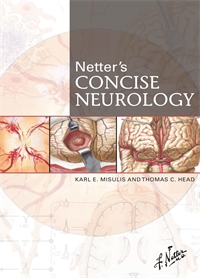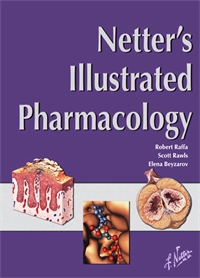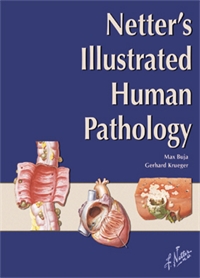Embryology - Cochard 1E
Author: Larry R. Cochard, PhD
ISBN: 9780914168997
- Page 2: The First and Second Weeks
- Page 3: The Early Embryonic Period
- Page 4: The Late Embryonic Period
- Page 5: The Fetal Period
- Page 6: Samples of Epithelia and Connective Tissue
- Page 7: Skin and Embryonic Connective Tissue
- Page 8: Induction
- Page 9: Apoptosis
- Page 10: Genetic Determination of Embryonic Axes and Segments
- Page 11: Segmentation and Segment Fates
- Page 12: Cell Adhesion and Cell Migration
- Page 13: Cell Differentiation and Cell Fates
- Page 14: Growth Factors
- Page 15: Classification of Abnormal Processes
- Page 16: Classification of Multiple Anomalies
- Page 17: Normal versus Major versus Minor Malformations
- Page 18: Marfan Syndrome
- Page 19: Apert and DeLange Syndromes
- Page 20: Examples of Deformations
- Page 21: Example of a Deformation Sequence
- Page 22: Drug-Induced Embryopathies
- Page 28: Adult Uterus, Ovaries, and Uterine Tubes
- Page 29: Ovary, Ova, and Follicle Development
- Page 30: The Menstrual Cycle and Pregnancy
- Page 31: Ovulation, Fertilization, and Migration Down the Uterine Tube
- Page 32: Ectopic Pregnancy
- Page 33: Tubal Pregnancy
- Page 34: Interstitial, Abdominal, and Ovarian Pregnancy
- Page 35: Implantation and Extraembryonic Membrane Formation
- Page 36: Gastrulation
- Page 37: Neurulation and Early Placenta and Coelom Development
- Page 38: Folding of the Gastrula
- Page 39: The Vertebrate Body Plan
- Page 40: Formation of the Placenta
- Page 41: The Endometrium and Fetal Membranes
- Page 42: Placental Structure
- Page 43: External Placental Structure; Maternal-Fetal Blood Barrier
- Page 44: Placental Variations
- Page 45: Placenta Previa
- Page 46: Summary of Ectodermal Derivatives
- Page 47: Summary of Endodermal Derivatives
- Page 48: Summary of Mesodermal Derivatives
- Page 52: Formation of the Neural Plate
- Page 53: Neurulation
- Page 54: Neural Tube and Neural Crest
- Page 55: Defects of the Spinal Cord and Vertebral Column
- Page 56: Defects of the Brain and Skull
- Page 57: Neuron Development
- Page 58: Development of the Cellular Sheath of Axons
- Page 59: Development of the Spinal Cord Layers
- Page 60: Alar and Basal Plates
- Page 61: Development of the Peripheral Nervous System
- Page 62: Somatic Versus Splanchnic Nerves
- Page 63: Growth of the Spinal Cord and Vertebral Column
- Page 64: Embryonic Dermatomes
- Page 65: Adult Dermatomes
- Page 66: Early Brain Development
- Page 67: Further Development of Forebrain, Medbrain, and Hindbrain
- Page 68: Development of Major Brain Structures
- Page 69: Growth of the Cerebral Hemispheres
- Page 70: Derivatives of the Forebrain, Midbrain, and Hindbrain
- Page 71: Cross Sections of the Midbrain and Hindbrain
- Page 72: Production of Cerebrospinal Fluid
- Page 73: Development of Motor Nuclei in the Brainstem
- Page 74: Segmentation of the Hindbrain
- Page 75: Forebrain Wall and Ventricles
- Page 76: Relationship Between Telencephalon and Diencephalon
- Page 77: Development of the Pituitary Gland
- Page 78: Development of the Ventricles
- Page 79: Congenital Ventricular Defects
- Page 84: Early Vascular Systems
- Page 85: Early Development of the Cardinal Systems
- Page 86: Transformation to the Postnatal Pattern
- Page 87: Vein Anomalies
- Page 88: Aortic Arch Arteries
- Page 89: Aortic Arch Anomalies
- Page 90: Anomalous Origins of the Pulmonary Arteries
- Page 91: Intersegmental Arteries and coarctation of the Aorta
- Page 92: Summary of Embryonic Blood Vessel Derivatives
- Page 93: Formation of Blood Vessels
- Page 94: Formation of the Left and Right Heart Tubes
- Page 95: Formation of a Single Heart Tube
- Page 96: Chambers of the Heart Tube
- Page 97: Bending of the Heart Tube
- Page 98: Partitioning of the Heart Tube
- Page 99: Atrial Separation
- Page 100: Spiral (Aorticopulmonary) Septum
- Page 101: Completion of the Spiral (Aorticopulmonary) Septum
- Page 102: Ventricular Separation and Bulbus Cordis
- Page 103: Adult Derivatives of the Heart Tube Chambers
- Page 104: Fetal Circulation
- Page 105: Transition to Postnatal Circulation
- Page 106: Congenital Heart Defect Concepts
- Page 107: Ventricular Septal Defects
- Page 108: Atrial Septal Defects
- Page 109: Spiral Septum Defects
- Page 110: Patent Ductus Arteriosus
- Page 114: Early Primordia
- Page 115: Formation of the Pleural Cavities
- Page 116: The Relationship Between Lungs and Pleural Cavities
- Page 117: Visceral and Parietal Pleura
- Page 118: Development of the Diaphragm
- Page 119: Congenital Diaphragmatic Hernia
- Page 120: The Airway at 4 to 7 Weeks
- Page 121: The Airway at 7 to 10 Weeks
- Page 122: Development of Bronchioles and Alveoli
- Page 123: Bronchial Epithelium Maturation
- Page 124: Congenital Anomalies of the Lower Airway
- Page 125: Airway Branching Anomalies
- Page 126: Bronchopulmonary Sequestration
- Page 127: Palate Formation in the Upper Airway
- Page 128: The Newborn Upper Airway
- Page 132: Early Primordia
- Page 133: Formation of the Gut Tube and Mesenteries
- Page 134: Foregut, Midgut, and Hindgut
- Page 135: Abdominal Veins
- Page 136: Foregut and Midgut Rotations
- Page 137: Meckel's Diverticulum
- Page 138: Lesser Peritoneal Sac
- Page 139: Introduction to the Retroperitoneal Concept
- Page 140: Midgut Loop
- Page 141: Abdominal Ligaments
- Page 142: Abdominal Foregut Organ Development
- Page 143: Development of Pancreatic Acini and Islets
- Page 144: Congenital Pancreatic Anomalies
- Page 145: Development of the Hindgut
- Page 146: Duplication, Atresia, and Situs Inversus
- Page 147: Megacolon (Hirschsprung's Disease)
- Page 148: Summary of Gut Organization
- Page 149: Development of the Abdominal Wall
- Page 150: Umbilical Hernia
- Page 151: Testis Descent Through Deep Body Wall
- Page 152: Coverings of the Spermatic Cord
- Page 153: The Adult Inguinal Region
- Page 154: Anomalies of the Processus Vaginalis
- Page 158: Early Primordia
- Page 159: Division of the Cloaca
- Page 160: Congenital Cloacal Anomalies
- Page 161: Pronephros, Mesonephros, and Metanephros
- Page 162: Development of the Metanephros
- Page 163: Ascent and Rotation of the Metanephric Kidneys
- Page 164: Kidney Rotation Anomalies and Renal Fusion
- Page 165: Kidney Migration Anomalies and Blood Vessel Formation
- Page 166: Hypoplasia
- Page 167: Ureteric Bud Duplication
- Page 168: Ectopic Ureters
- Page 169: Bladder Anomalies
- Page 170: Allantois/Urachus Anomalies
- Page 171: Primordia of the Genital System
- Page 172: 8-Week Undifferentiated (Indifferent) Stage
- Page 173: Anterior View of the Derivatives
- Page 174: Paramesonephric Duct Anomalies
- Page 175: Homologues of the External Genital Organs
- Page 176: Hypospadias and Epispadias
- Page 177: Gonadal Differentiation
- Page 178: Testis, Epididymis, and Ductus Deferens
- Page 179: Descent of Testis
- Page 180: Ova and Follicles
- Page 181: Summary of Urogenital Primordia and Derivatives
- Page 182: Summary of Genital Primordia and Derivatives
- Page 186: Myotomes, Dermatomes, and Sclerotomes
- Page 187: Muscle and Vertebral Column Segmentation
- Page 188: Mesenchymal Primordia at 5 and 6 Weeks
- Page 189: Ossification of the Vertebral Column
- Page 190: Development of the Atlas, Axis, Ribs, and Sternum
- Page 191: Bone Cells and Bone Deposition
- Page 192: Histology of Bone
- Page 193: Membrane Bone and Skull Development
- Page 194: Bone Development in Mesenchyme
- Page 195: Osteon Formation
- Page 196: Compact Cone Development and Remodeling
- Page 197: Endochondral Ossification in a Long Bone
- Page 198: Epiphyseal Growth Plate
- Page 199: Peripheral Cartilage Function in the Epiphysis
- Page 202: Ossification in the Newborn Skeleton
- Page 203: Joint Development
- Page 204: Muscular System: Primordia
- Page 205: Segmentation and Division of Myotomes
- Page 206: Epimere, Hypomere, and Muscle Groups
- Page 207: Development and Organization of Limb Buds
- Page 208: Rotaton of the Limbs
- Page 209: Limb Rotation and Dermatomes
- Page 210: Embryonic Plan of the Brachial Plexus
- Page 211: Division of the Lumbosacral Plexus
- Page 212: Developing Skeletal Muscles
- Page 216: Ectoderm, Endoderm, and Mesoderm
- Page 217: Pharyngeal (Branchial) Arches
- Page 218: Ventral and Midsagittal Views
- Page 219: Fate of the Pharyngeal Pouches
- Page 220: Midsagittal View of the Pharynx
- Page 221: Fate of the Pharyngeal Grooves
- Page 222: Pharyngeal Groove and Pouch Anomalies
- Page 223: Pharyngeal Arch Nerves
- Page 224: Sensory Inneration Territories
- Page 225: Early Development of Pharyngeal Arch Muscles
- Page 226: Later Development of Pharyngeal Arch Muscles
- Page 227: Pharyngeal Arch Cartilages
- Page 228: Ossification of the Skull
- Page 229: Ossification of the Skull
- Page 230: Premature Suture Closure
- Page 231: Cervical Ossification
- Page 232: Torticollis
- Page 233: Cervical Plexus
- Page 234: Orbit
- Page 236: Adult Ear Organization
- Page 237: Summary of Ear Development
- Page 238: Cranial Nerve Primordia
- Page 240: Parasympathetic Innervation and Unique Nerves
- Page 241: Development of the Face: 3 to 4 Weeks
- Page 242: Development of the Face: 4 to 6 Weeks
- Page 243: Development of the Face: 6 to 10 Weeks
- Page 244: Palate Formation
- Page 245: Inferior View of Palate Formation; Roof of the Oral Cavity
- Page 246: Congenital Anomalies of the Oral Cavity
- Page 247: Floor of the Oral Cavity
- Page 248: Developmental Coronal Sections
- Page 250: Dental Eruption
